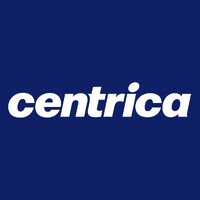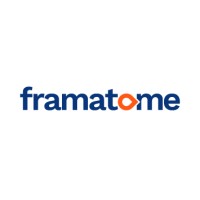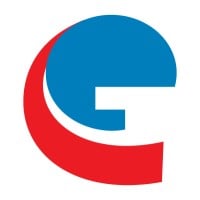
Rosatom Company Cyber Security Posture
rosatom.ruThe State Atomic Energy Corporation "Rosatom" (short name Rosatom) runs all nuclear assets of the Russian Federation, both civil and weapons. Along with commercial activities which move forward nuclear power and nuclear fuel cycle facilities, it acts as a governmental agent, primarily in the field of national security (nuclear deterrence), nuclear and radiation safety, basic and applied science. Besides, it has the authority to fulfill on behalf of the Russian Federation the international commitments undertaken by the nation with regard to the peaceful use of atomic energy and non-proliferation. ROSATOM was established on December 18, 2007, following the adoption of the Federal Law On the State Atomic Energy Corporation "Rosatom", which took effect from December 5, 2007. The Russian Government has set three major goals for ROSATOM: ensure sustainable development of the Nuclear Weapons Complex; increase nuclear contribution in electricity generation (to 25%-30% by 2030) with continued safety improvement; and strengthen the country’s position on the global market of nuclear technology, by expanding traditional markets and winning new ones. One of the most important ROSATOM constituents is Atomenergoprom that has incorporated all civil assets of the nuclear industry. Apart from Atomenergoprom, ROSATOM includes nuclear weapons enterprises; the federal state-owned unitary enterprise Atomflot running the nuclear ice-breaker fleet; INTER RAO UES which manages energy assets in 14 countries and controls export/import of electricity; and Atomstroyexport – a company building nuclear power plants outside Russia.
Rosatom Company Details
rosatom
10,001+ employees
0
221
Utilities
rosatom.ru
Scan still pending
ROS_1774964
In-progress
Between 800 and 900
This score is AI-generated and less favored by cyber insurers, who prefer the TPRM score.
 Rosatom Global Score
Rosatom Global Score.png)

Rosatom Company Scoring based on AI Models
| Model Name | Date | Description | Current Score Difference | Score |
|---|---|---|---|---|
| AVERAGE-Industry | 03-12-2025 | This score represents the average cybersecurity rating of companies already scanned within the same industry. It provides a benchmark to compare an individual company's security posture against its industry peers. | N/A | Between 800 and 900 |
Rosatom Company Cyber Security News & History
| Entity | Type | Severity | Impact | Seen | Url ID | Details | View |
|---|
Rosatom Company Subsidiaries

The State Atomic Energy Corporation "Rosatom" (short name Rosatom) runs all nuclear assets of the Russian Federation, both civil and weapons. Along with commercial activities which move forward nuclear power and nuclear fuel cycle facilities, it acts as a governmental agent, primarily in the field of national security (nuclear deterrence), nuclear and radiation safety, basic and applied science. Besides, it has the authority to fulfill on behalf of the Russian Federation the international commitments undertaken by the nation with regard to the peaceful use of atomic energy and non-proliferation. ROSATOM was established on December 18, 2007, following the adoption of the Federal Law On the State Atomic Energy Corporation "Rosatom", which took effect from December 5, 2007. The Russian Government has set three major goals for ROSATOM: ensure sustainable development of the Nuclear Weapons Complex; increase nuclear contribution in electricity generation (to 25%-30% by 2030) with continued safety improvement; and strengthen the country’s position on the global market of nuclear technology, by expanding traditional markets and winning new ones. One of the most important ROSATOM constituents is Atomenergoprom that has incorporated all civil assets of the nuclear industry. Apart from Atomenergoprom, ROSATOM includes nuclear weapons enterprises; the federal state-owned unitary enterprise Atomflot running the nuclear ice-breaker fleet; INTER RAO UES which manages energy assets in 14 countries and controls export/import of electricity; and Atomstroyexport – a company building nuclear power plants outside Russia.
Access Data Using Our API

Get company history
.png)
Rosatom Cyber Security News
India & Russia eye collaboration on nuclear energy, cybersecurity
India and Russia are strengthening ties. Discussions are underway for joint projects in nuclear energy and cybersecurity. Focus is on cutting- ...
Sanctioned Russia emerges unscathed in global IT outage
Microsoft and other IT firms have suspended sales of new products in Russia and have been scaling down their operations in line with sanctions ...
Russia's nuclear power plants secure: Rosatom chief
Alexey Likhachev, the chief executive of Russia's State Atomic Energy Corporation, Rosatom, confirmed Thursday that Russia's nuclear power plants are secure ...
Russia eyes Namibia’s nuclear potential – News Stand
Uranium One Group is an international group of companies, owned by Rosatom State Atomic Energy Corporation. It is one of the world's largest ...
Hackers claim to take down Russian satellite communications provider
The Russian attack on Viasat disabled the modems of tens of thousands of European customers and posed a serious threat to Ukraine as it prepared ...
Anonymous Challenges Russia's Supposed Cyber Prowess With Repeat Rosatom Breach
@Ksecureteamlab alleged that the Russian media is working with "digital pirates" to falsify images, attack platforms and make their exploits " ...
Hackers, Hoodies, and Helmets: Technology and the changing face of Russian private military contractors
Hackers, Hoodies, and Helmets: Technology and the changing face of Russian private military contractors. By Emma Schroeder, Gavin Wilde, Justin Sherman, and ...
Exclusive: Meet Russia’s Cambridge Analytica, Run By A Former KGB Agent Turned YouTube Influencer
Russia's 'Cyber Grandpa' has been sanctioned by the U.S. government for selling a big data surveillance tool to Kremlin spies, ...

Rosatom Similar Companies

American Electric Power
Our team at American Electric Power is committed to improving our customers' lives with reliable, affordable power. We are investing $54 billion from 2025 through 2029 to enhance service for customers and support the growing energy needs of our communities. Our nearly 16,000 employees operate and ma

Centrica
Centrica is an international energy services and solutions company, founded on a 200-year heritage of serving customers in homes and businesses. We supply energy and services to over 10 million customers, mainly in the UK and Ireland, through brands such as British Gas, Bord Gáis Energy and Centri

Framatome
Framatome is an international leader in nuclear energy recognized for its innovative, digital and value added solutions for the global nuclear fleet. With worldwide expertise and a proven track record for reliability and performance, the company designs, services and installs components, fuel, and i

Lahore Electric Supply Company Limited
Lahore Electric Supply Company is building its future upon a foundation of strong core values. As electricity industry undergoes massive change, our success will come from respect for people, uncompromised commitment to safety, quality customer services and support for the communities we serve. Thro

TATA Power
Tata Power is one of India’s largest integrated power companies and together with its subsidiaries and jointly controlled entities, has an installed/managed capacity of 14,294 MW. The Company has a presence across the entire power value chain - generation of renewable as well as conventional power i

Electrica
Electrica Group is a key player in the electricity distribution, supply and production market in Romania, as well as one of the most important players in the energy services sector. As of July 2014, Electrica has become a company with private majority capital, listed on the Bucharest and London sto

Frequently Asked Questions (FAQ) on Cybersecurity Incidents
Rosatom CyberSecurity History Information
Total Incidents: According to Rankiteo, Rosatom has faced 0 incidents in the past.
Incident Types: As of the current reporting period, Rosatom has not encountered any cybersecurity incidents.
Total Financial Loss: The total financial loss from these incidents is estimated to be {total_financial_loss}.
Cybersecurity Posture: The company's overall cybersecurity posture is described as The State Atomic Energy Corporation "Rosatom" (short name Rosatom) runs all nuclear assets of the Russian Federation, both civil and weapons. Along with commercial activities which move forward nuclear power and nuclear fuel cycle facilities, it acts as a governmental agent, primarily in the field of national security (nuclear deterrence), nuclear and radiation safety, basic and applied science. Besides, it has the authority to fulfill on behalf of the Russian Federation the international commitments undertaken by the nation with regard to the peaceful use of atomic energy and non-proliferation. ROSATOM was established on December 18, 2007, following the adoption of the Federal Law On the State Atomic Energy Corporation "Rosatom", which took effect from December 5, 2007. The Russian Government has set three major goals for ROSATOM: ensure sustainable development of the Nuclear Weapons Complex; increase nuclear contribution in electricity generation (to 25%-30% by 2030) with continued safety improvement; and strengthen the country’s position on the global market of nuclear technology, by expanding traditional markets and winning new ones. One of the most important ROSATOM constituents is Atomenergoprom that has incorporated all civil assets of the nuclear industry. Apart from Atomenergoprom, ROSATOM includes nuclear weapons enterprises; the federal state-owned unitary enterprise Atomflot running the nuclear ice-breaker fleet; INTER RAO UES which manages energy assets in 14 countries and controls export/import of electricity; and Atomstroyexport – a company building nuclear power plants outside Russia..
Detection and Response: The company detects and responds to cybersecurity incidents through {description_of_detection_and_response_process}.
Incident Details
Incident 1: Ransomware Attack
Title: {Incident_Title}
Description: {Brief_description_of_the_incident}
Date Detected: {Detection_Date}
Date Publicly Disclosed: {Disclosure_Date}
Date Resolved: {Resolution_Date}
Type: {Type_of_Attack}
Attack Vector: {Attack_Vector}
Vulnerability Exploited: {Vulnerability}
Threat Actor: {Threat_Actor}
Motivation: {Motivation}
Incident 2: Data Breach
Title: {Incident_Title}
Description: {Brief_description_of_the_incident}
Date Detected: {Detection_Date}
Date Publicly Disclosed: {Disclosure_Date}
Date Resolved: {Resolution_Date}
Type: {Type_of_Attack}
Attack Vector: {Attack_Vector}
Vulnerability Exploited: {Vulnerability}
Threat Actor: {Threat_Actor}
Motivation: {Motivation}
Common Attack Types: As of now, the company has not encountered any reported incidents involving common cyberattacks.
Identification of Attack Vectors: The company identifies the attack vectors used in incidents through {description_of_identification_process}.
Impact of the Incidents
Incident 1: Ransomware Attack
Financial Loss: {Financial_Loss}
Data Compromised: {Data_Compromised}
Systems Affected: {Systems_Affected}
Downtime: {Downtime}
Operational Impact: {Operational_Impact}
Conversion Rate Impact: {Conversion_Rate_Impact}
Revenue Loss: {Revenue_Loss}
Customer Complaints: {Customer_Complaints}
Brand Reputation Impact: {Brand_Reputation_Impact}
Legal Liabilities: {Legal_Liabilities}
Identity Theft Risk: {Identity_Theft_Risk}
Payment Information Risk: {Payment_Information_Risk}
Incident 2: Data Breach
Financial Loss: {Financial_Loss}
Data Compromised: {Data_Compromised}
Systems Affected: {Systems_Affected}
Downtime: {Downtime}
Operational Impact: {Operational_Impact}
Conversion Rate Impact: {Conversion_Rate_Impact}
Revenue Loss: {Revenue_Loss}
Customer Complaints: {Customer_Complaints}
Brand Reputation Impact: {Brand_Reputation_Impact}
Legal Liabilities: {Legal_Liabilities}
Identity Theft Risk: {Identity_Theft_Risk}
Payment Information Risk: {Payment_Information_Risk}
Average Financial Loss: The average financial loss per incident is {average_financial_loss}.
Commonly Compromised Data Types: The types of data most commonly compromised in incidents are {list_of_commonly_compromised_data_types}.
Incident 1: Ransomware Attack
Entity Name: {Entity_Name}
Entity Type: {Entity_Type}
Industry: {Industry}
Location: {Location}
Size: {Size}
Customers Affected: {Customers_Affected}
Incident 2: Data Breach
Entity Name: {Entity_Name}
Entity Type: {Entity_Type}
Industry: {Industry}
Location: {Location}
Size: {Size}
Customers Affected: {Customers_Affected}
Response to the Incidents
Incident 1: Ransomware Attack
Incident Response Plan Activated: {Yes/No}
Third Party Assistance: {Yes/No}
Law Enforcement Notified: {Yes/No}
Containment Measures: {Containment_Measures}
Remediation Measures: {Remediation_Measures}
Recovery Measures: {Recovery_Measures}
Communication Strategy: {Communication_Strategy}
Adaptive Behavioral WAF: {Adaptive_Behavioral_WAF}
On-Demand Scrubbing Services: {On_Demand_Scrubbing_Services}
Network Segmentation: {Network_Segmentation}
Enhanced Monitoring: {Enhanced_Monitoring}
Incident 2: Data Breach
Incident Response Plan Activated: {Yes/No}
Third Party Assistance: {Yes/No}
Law Enforcement Notified: {Yes/No}
Containment Measures: {Containment_Measures}
Remediation Measures: {Remediation_Measures}
Recovery Measures: {Recovery_Measures}
Communication Strategy: {Communication_Strategy}
Adaptive Behavioral WAF: {Adaptive_Behavioral_WAF}
On-Demand Scrubbing Services: {On_Demand_Scrubbing_Services}
Network Segmentation: {Network_Segmentation}
Enhanced Monitoring: {Enhanced_Monitoring}
Incident Response Plan: The company's incident response plan is described as {description_of_incident_response_plan}.
Third-Party Assistance: The company involves third-party assistance in incident response through {description_of_third_party_involvement}.
Data Breach Information
Incident 2: Data Breach
Type of Data Compromised: {Type_of_Data}
Number of Records Exposed: {Number_of_Records}
Sensitivity of Data: {Sensitivity_of_Data}
Data Exfiltration: {Yes/No}
Data Encryption: {Yes/No}
File Types Exposed: {File_Types}
Personally Identifiable Information: {Yes/No}
Prevention of Data Exfiltration: The company takes the following measures to prevent data exfiltration: {description_of_prevention_measures}.
Handling of PII Incidents: The company handles incidents involving personally identifiable information (PII) through {description_of_handling_process}.
Ransomware Information
Incident 1: Ransomware Attack
Ransom Demanded: {Ransom_Amount}
Ransom Paid: {Ransom_Paid}
Ransomware Strain: {Ransomware_Strain}
Data Encryption: {Yes/No}
Data Exfiltration: {Yes/No}
Ransom Payment Policy: The company's policy on paying ransoms in ransomware incidents is described as {description_of_ransom_payment_policy}.
Data Recovery from Ransomware: The company recovers data encrypted by ransomware through {description_of_data_recovery_process}.
Regulatory Compliance
Incident 1: Ransomware Attack
Regulations Violated: {Regulations_Violated}
Fines Imposed: {Fines_Imposed}
Legal Actions: {Legal_Actions}
Regulatory Notifications: {Regulatory_Notifications}
Incident 2: Data Breach
Regulations Violated: {Regulations_Violated}
Fines Imposed: {Fines_Imposed}
Legal Actions: {Legal_Actions}
Regulatory Notifications: {Regulatory_Notifications}
Regulatory Frameworks: The company complies with the following regulatory frameworks regarding cybersecurity: {list_of_regulatory_frameworks}.
Ensuring Regulatory Compliance: The company ensures compliance with regulatory requirements through {description_of_compliance_measures}.
Lessons Learned and Recommendations
Incident 1: Ransomware Attack
Lessons Learned: {Lessons_Learned}
Incident 2: Data Breach
Lessons Learned: {Lessons_Learned}
Incident 1: Ransomware Attack
Recommendations: {Recommendations}
Incident 2: Data Breach
Recommendations: {Recommendations}
Key Lessons Learned: The key lessons learned from past incidents are {list_of_key_lessons_learned}.
Implemented Recommendations: The company has implemented the following recommendations to improve cybersecurity: {list_of_implemented_recommendations}.
References
Additional Resources: Stakeholders can find additional resources on cybersecurity best practices at {list_of_additional_resources}.
Investigation Status
Incident 1: Ransomware Attack
Investigation Status: {Investigation_Status}
Incident 2: Data Breach
Investigation Status: {Investigation_Status}
Communication of Investigation Status: The company communicates the status of incident investigations to stakeholders through {description_of_communication_process}.
Stakeholder and Customer Advisories
Incident 1: Ransomware Attack
Stakeholder Advisories: {Stakeholder_Advisories}
Customer Advisories: {Customer_Advisories}
Incident 2: Data Breach
Stakeholder Advisories: {Stakeholder_Advisories}
Customer Advisories: {Customer_Advisories}
Advisories Provided: The company provides the following advisories to stakeholders and customers following an incident: {description_of_advisories_provided}.
Initial Access Broker
Incident 1: Ransomware Attack
Entry Point: {Entry_Point}
Reconnaissance Period: {Reconnaissance_Period}
Backdoors Established: {Backdoors_Established}
High Value Targets: {High_Value_Targets}
Data Sold on Dark Web: {Yes/No}
Incident 2: Data Breach
Entry Point: {Entry_Point}
Reconnaissance Period: {Reconnaissance_Period}
Backdoors Established: {Backdoors_Established}
High Value Targets: {High_Value_Targets}
Data Sold on Dark Web: {Yes/No}
Monitoring and Mitigation of Initial Access Brokers: The company monitors and mitigates the activities of initial access brokers through {description_of_monitoring_and_mitigation_measures}.
Post-Incident Analysis
Incident 1: Ransomware Attack
Root Causes: {Root_Causes}
Corrective Actions: {Corrective_Actions}
Incident 2: Data Breach
Root Causes: {Root_Causes}
Corrective Actions: {Corrective_Actions}
Post-Incident Analysis Process: The company's process for conducting post-incident analysis is described as {description_of_post_incident_analysis_process}.
Corrective Actions Taken: The company has taken the following corrective actions based on post-incident analysis: {list_of_corrective_actions_taken}.
Additional Questions
General Information
Ransom Payment History: The company has {paid/not_paid} ransoms in the past.
Last Ransom Demanded: The amount of the last ransom demanded was {last_ransom_amount}.
Last Attacking Group: The attacking group in the last incident was {last_attacking_group}.
Incident Details
Most Recent Incident Detected: The most recent incident detected was on {most_recent_incident_detected_date}.
Most Recent Incident Publicly Disclosed: The most recent incident publicly disclosed was on {most_recent_incident_publicly_disclosed_date}.
Most Recent Incident Resolved: The most recent incident resolved was on {most_recent_incident_resolved_date}.
Impact of the Incidents
Highest Financial Loss: The highest financial loss from an incident was {highest_financial_loss}.
Most Significant Data Compromised: The most significant data compromised in an incident was {most_significant_data_compromised}.
Most Significant System Affected: The most significant system affected in an incident was {most_significant_system_affected}.
Response to the Incidents
Third-Party Assistance in Most Recent Incident: The third-party assistance involved in the most recent incident was {third_party_assistance_in_most_recent_incident}.
Containment Measures in Most Recent Incident: The containment measures taken in the most recent incident were {containment_measures_in_most_recent_incident}.
Data Breach Information
Most Sensitive Data Compromised: The most sensitive data compromised in a breach was {most_sensitive_data_compromised}.
Number of Records Exposed: The number of records exposed in the most significant breach was {number_of_records_exposed}.
Ransomware Information
Highest Ransom Demanded: The highest ransom demanded in a ransomware incident was {highest_ransom_demanded}.
Highest Ransom Paid: The highest ransom paid in a ransomware incident was {highest_ransom_paid}.
Regulatory Compliance
Highest Fine Imposed: The highest fine imposed for a regulatory violation was {highest_fine_imposed}.
Most Significant Legal Action: The most significant legal action taken for a regulatory violation was {most_significant_legal_action}.
Lessons Learned and Recommendations
Most Significant Lesson Learned: The most significant lesson learned from past incidents was {most_significant_lesson_learned}.
Most Significant Recommendation Implemented: The most significant recommendation implemented to improve cybersecurity was {most_significant_recommendation_implemented}.
References
Most Recent Source: The most recent source of information about an incident is {most_recent_source}.
Most Recent URL for Additional Resources: The most recent URL for additional resources on cybersecurity best practices is {most_recent_url}.
Investigation Status
Current Status of Most Recent Investigation: The current status of the most recent investigation is {current_status_of_most_recent_investigation}.
Stakeholder and Customer Advisories
Most Recent Stakeholder Advisory: The most recent stakeholder advisory issued was {most_recent_stakeholder_advisory}.
Most Recent Customer Advisory: The most recent customer advisory issued was {most_recent_customer_advisory}.
Initial Access Broker
Most Recent Entry Point: The most recent entry point used by an initial access broker was {most_recent_entry_point}.
Most Recent Reconnaissance Period: The most recent reconnaissance period for an incident was {most_recent_reconnaissance_period}.
Post-Incident Analysis
Most Significant Root Cause: The most significant root cause identified in post-incident analysis was {most_significant_root_cause}.
Most Significant Corrective Action: The most significant corrective action taken based on post-incident analysis was {most_significant_corrective_action}.
What Do We Measure?
















Every week, Rankiteo analyzes billions of signals to give organizations a sharper, faster view of emerging risks. With deeper, more actionable intelligence at their fingertips, security teams can outpace threat actors, respond instantly to Zero-Day attacks, and dramatically shrink their risk exposure window.
These are some of the factors we use to calculate the overall score:
Identify exposed access points, detect misconfigured SSL certificates, and uncover vulnerabilities across the network infrastructure.
Gain visibility into the software components used within an organization to detect vulnerabilities, manage risk, and ensure supply chain security.
Monitor and manage all IT assets and their configurations to ensure accurate, real-time visibility across the company's technology environment.
Leverage real-time insights on active threats, malware campaigns, and emerging vulnerabilities to proactively defend against evolving cyberattacks.




